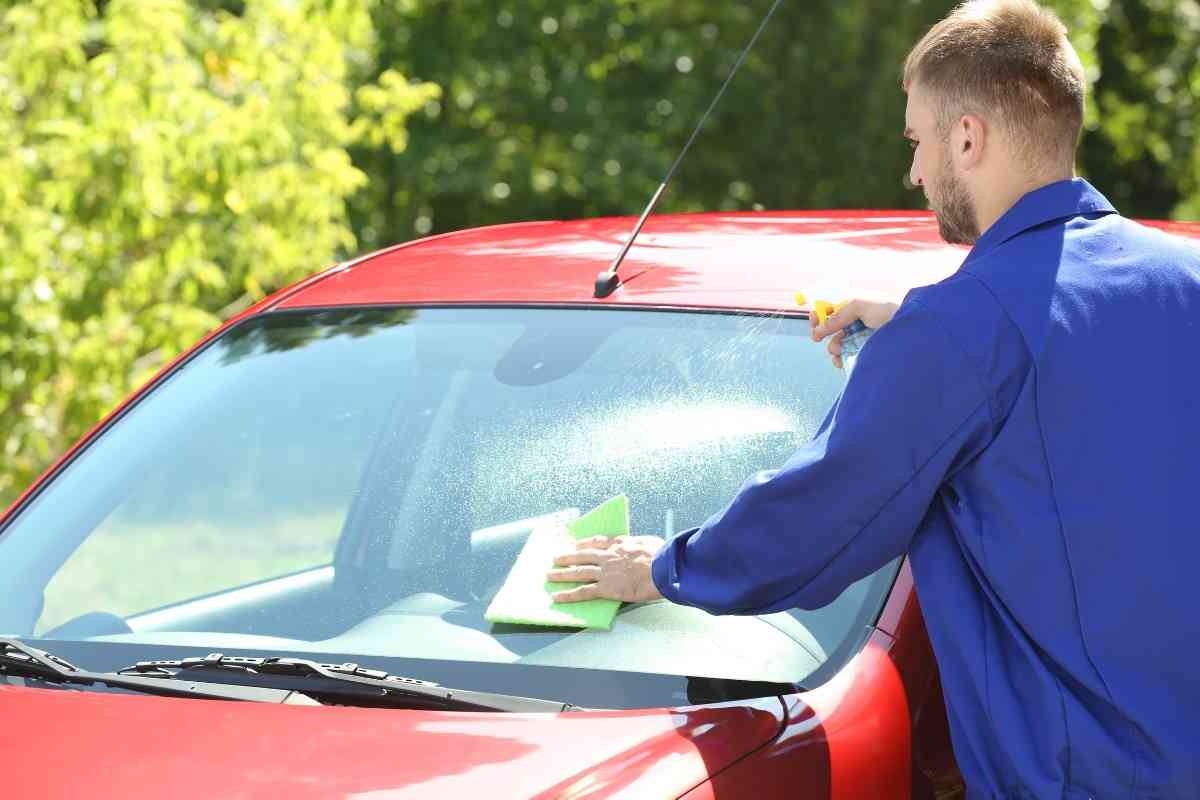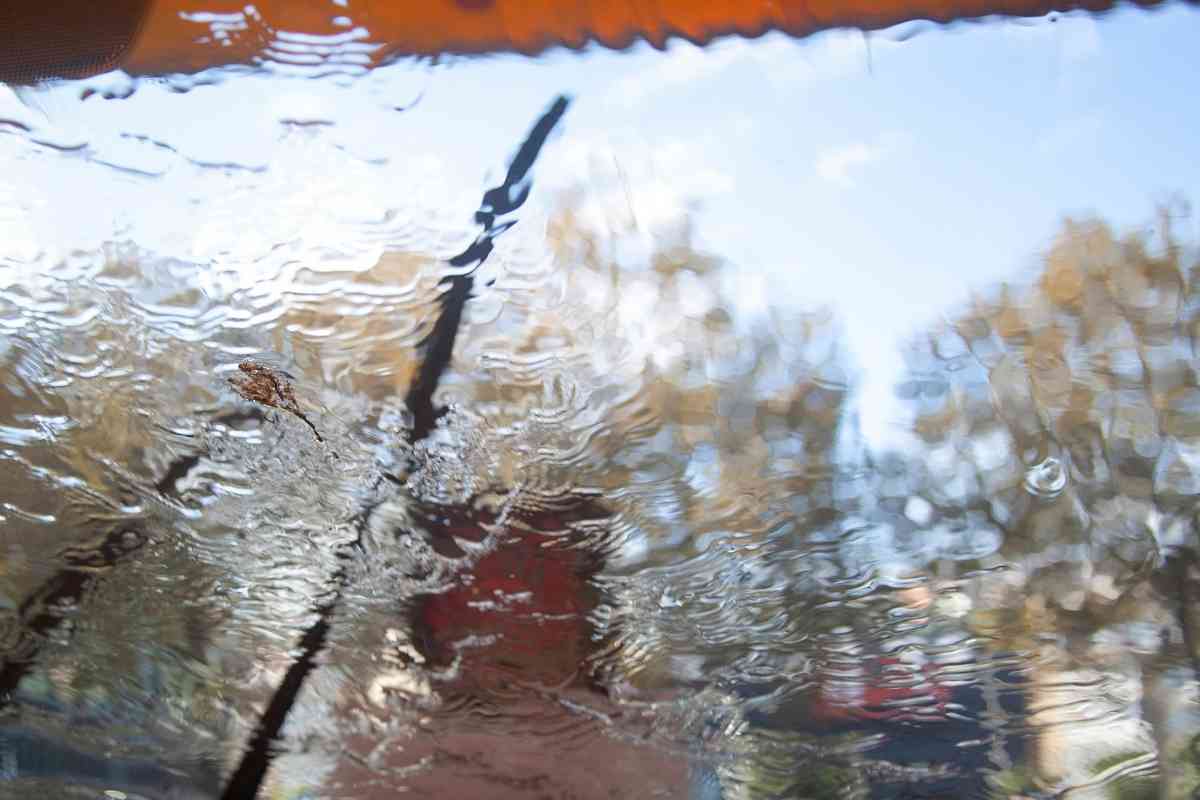8 Ways To Remove Water Spots From A Car Windshield
While water spots won’t leave permanent damage, they can still impact visibility and the overall presentation of your car. Hard water spots can cause decreased visibility and become etched or bonded to your windshield, making them more challenging to remove.

How do you remove water spots from car windows?
There are several foolproof ways of removing water spots and maintaining a crystal clear car windshield:
- Vinegar
- Lemon Juice
- Toothpaste
- Baking Soda + Vinegar
- Detailing Clay
- Isopropyl Alcohol
- Commercial Products
- Prevention As Defense
Water spots on your windshield are an inevitable occurrence when out on the road or simply as a result of not properly drying your vehicle after washing or rain events.
Knowing both natural remedies and commercial solutions will make the process of removal easier and prevent a cumulative layering effect that can cause permanent damage to the surface of your vehicle.
In addition, we will give you some preventative techniques to evade these pesky water spots altogether.
We have consolidated all the best techniques of water spot removal below from fellow car owners and detail specialists. These tried and true methods, from average car owners to dedicated detailers, will help keep your car in brand new condition.
How To Remove Water Spots From Car Windshield
Where Do Water Spots Come From
Unless your car has never left the showroom, you have likely experienced the visibility impacting water spot problem on your windshield or the persistent dulling of your body paint from rainwater or an incomplete car wash.
Water spots and all the contaminants contained in them can become permanently etched or bonded to the surface of your vehicle if left unattended.
Hard water is not the only perpetrator of the water spot phenomena. These spots are also caused by acid rain, road salt, dust, and exhaust soot. Even the benevolent windshield washer spray can cause these unsightly stains.
Hard water in and of itself can also cause these stubborn marks. This is because rainwater drops heat up, leaving behind limescale made of calcium and magnesium on the surface. This crusty white residue can build up layers equating to a water ring on your bathtub.
While a professional car wash foam can remove the top layer, the hard water spots will likely resurface after drying.
Here are a few of the most common types of water spots.
Regular Water Spots
Regular water spots are the classic mark of mineral-rich water splashes also seen in sinks, tubs, and showers. When these build up over time, they can become layered and increasingly difficult to remove.

Bonded Water Mineral Stains
Bonded water mineral stains are the result of acidic rain, which has high amounts of sulphuric and nitric acids. This type of stain is more serious than a regular water spot. They will erode paint and windshield sealant to create permanent damage.
These must be removed immediately to prevent cumulative damage.
Etched Water Mineral Stains
Etched water mineral stains come from direct sunlight. These stains become baked into the sealant or paint surface of our vehicle. This can result in a dull, lackluster paint coat and create serious damage to the surface.
Below we lay out the best way to get rid of these deposits.
DIY Remedies
As with any DIY remedy, test first on a small inconspicuous area. Some windows and paint coatings are not meant to be treated with even the gentlest DIY treatment.
Vinegar
The most widely known natural remedy for the common hard water spot is distilled vinegar. Vinegar has high acidity making it an efficient solvent for mineral build-up. A vinegar solution is the best place to start with removing a basic water spot before moving on to more heavy-handed tactics.
- Mix distilled vinegar 1:1 with water.
- Pour into a spray bottle.
- Apply to affected areas, wipe with a soft cloth, and dry completely.
Lemon Juice
Lemon juice has a high level of natural acidity to cut through stubborn water spot stains.
You can do this in two ways.
- Cut a lemon in half. Rub the lemon over the surface while squeezing to remove the water spots. Squeegee and dry completely with a soft cloth.
- For ongoing maintenance, juice two lemons, and mix with equal parts water to create a solution that can be put into a spray bottle. Spray the affected areas and squeegee and dry completely with a soft cloth.
Toothpaste
Toothpaste is a mid enough abrasive to remove the crustiest of hard water spots while not damaging the surface.
- Mix one part of toothpaste with four parts of water.
- Apply to the water spot affected surface and let sit for 10 minutes.
- Use a squeegee or soft cloth to remove the mixture and rinse and dry completely.
Baking Soda Paste + Vinegar
This reactive combo has a dissolving effect on crusty hard water spots.
- Make a 1:1 paste of baking soda and water.
- Apply evenly to the affected surface.
- Pour distilled vinegar into a spray bottle. Spray over the baking soda mixture. Allow it to bubble and sit for one minute.
- Rinse the area and dry thoroughly.
Detailing Clay
Detailing Clay is best for small areas of persistent water spots. Like artist’s clay, detailing clay is versatile and can be molded into any shape. It works as easily as an eraser to remove stubborn etchings in mineral deposits.
It often has a lubricant mixed in that aids in removal by force of rubbing the clay over the affected areas.
Isopropyl Alcohol
Isopropyl alcohol has a high evaporation rate leaving a streak-free finish. It is a great solution for milder water spots and can be used as a preventative after regular washing.
Immediately after a standard wash and dry, apply a splash of Isopropyl Alcohol on a microfibre cloth and give the surface a wipe down. This will lift milder water spots without issue and evaporate to leave a clean finish.
Commercial Products
All commercial spot removers have different ingredients, including solvents, absorbers, polishers, and conditioners, but most have mineral oil as a common lubricant ingredient.
After washing and drying the car, apply the commercial product with two to three good passes over the water spots. Use a clean soft cloth to dry thoroughly.
The Best Reviews Guide calls Mothers California Gold Spot Remover its top hard water remover for 2022.
Last update on 2025-12-21 / If you click this affiliate link and make a purchase, we earn a commission at no additional cost to you.
It is specially formulated for windshields, mirrors, and other exterior glass surfaces. It boasts high dissolving power for not just stubborn water spots, but also tree sap, salt spray, and paint overspray.
CLR®
CLR® Calcium, Lime, and Rust Remover is a classic all-around vehicle cleaner that promises to take care of what the automatic car wash couldn’t. Apply equal amounts of CLR® and water to a microfiber cloth to wipe off hard water spots on glass, trim, and the car’s body. Dry thoroughly with a clean cloth for a brand new finish.
Prevention
Although washing your car can be the best prevention against hard water spot buildup, doing so yourself might be the reason for the spots in the first place. Therefore, it is imperative to use professional car washing services that use commercial dryers to ensure that all water is removed from the surface before you drive into unavoidable environmental contaminants.
The absolute best strategy for water spots is prevention. A wax coating is one of the best ways to prevent water spot build-up on the surface of your vehicle. The wax layer acts as a solid barrier to the adhesion of water spots to paint or sealant.

